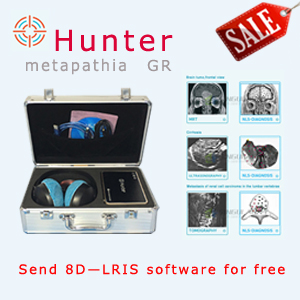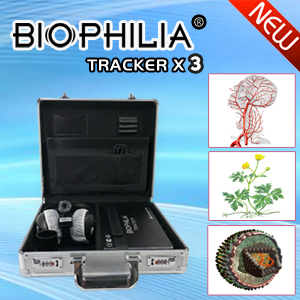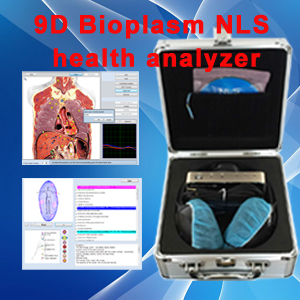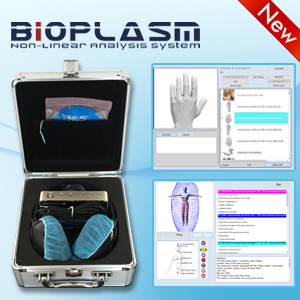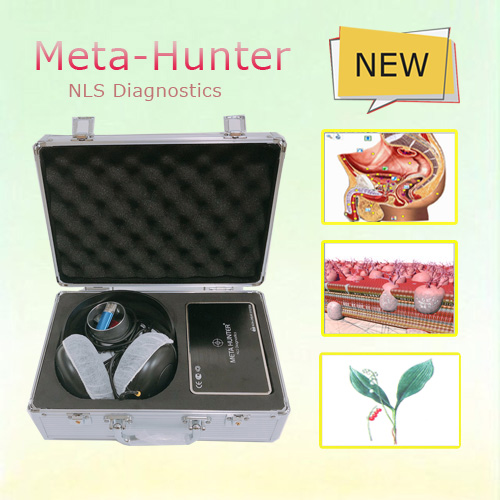The results and discussion of Bioplasm nls
We have registered 78 pleomorphic adenomas, which comprised 54.5% of all detected space-occupying lesions of large salivary glands and 63.4% of all benign tumors of large salivary glands. In 56 (71.8%) cases pleomorphic adenomas were located in parotid salivary glands and in submandibular glands in 22 (28.2%) cases.
Bioplasm nls-graphy revealed pleomorphic adenomas of parotid salivary glands in 46 (82.2%) cases as oval or round hyperchromogenic (6 points according to Fleindler’s scale) formations with distinct contours and heterogeneous structure. Surrounding tumor of salivary gland parenchyma was not changed according to its structure and chromogeneity. Pleomorphic adenomas up to 1 cm. in diameter had homogeneous chromogenic structure, adenomas more than 1 cm. had homogeneous isochromogenic structure due to hemorrhage and discharge areas. Pleomorphic adenomas of submandibular glands were characterized by hyperchromogenic foci of various shapes.
Bioplasm nls-angiography revealed vascular bed affections in 74 (94.9%) cases of pleomorphic adenomas. Spectral-entropy analysis was used for differentiation of pleomorphic adenomas from other salivary gland benign tumors (leiomyoma, teratoma, neurinoma).
In 44 (93.6%) cases CT displayed pleomorphic tumor of parotid gland as single high-density formation (Mavrg = 29,6 ± 4,2 HU) of round-shape, with distinct edges and smooth contours. Tumor structure was heterogeneous in 25 (53.2%) and homogeneous in 22 (46.8%) cases. Average tumor size reached 2,9 ± 0,9 cm.; its sizes reached 5.1 cm. if located in deep lobe of gland. The density of unaffected part of parenchyma was 16,4 ± 5,2 HU. In 3 (3.8%) patients, however, tumor had its density equal to surrounding parenchyma, which especially complicated diagnostics of tumors located in the narrow parts of salivary glands (pole).
Unlike parotid glands formations, pleomorphic adenomas of submandibular salivary glands had no clear boundaries separating tumor from gland, tumor density corresponded to parenchyma’s, average tumor size was 3,6 ± 1,3 cm. Thus, significant increase of gland sizes compared to the opposite side and displacement of surrounding soft tissues was registered.
When using Bioplasm nls-method, most researchers describe pleomorphic adenomas of greater salivary glands as hyperchromogenic (5-6 according to Fleindler’s scale) round-shape formations.
Tumor-surrounding parenchyma of salivary gland was structually and chromogeneically not changed. According to our data, pleomorphic adenomas of submandibular glands (unlike parotid glands tumors), were characterized by isochromogenic foci of various high-chromogeneity forms. Preserved parenchyma was seen at Bioplasm nls-graphy more clearly compared to CT picture.
In 75% cases of using CT, pleomorphic adenomas had homogeneous pattern; clear, well-determined edges were found in 90% of pleomorphic adenomas, which corresponds to literature data.
This article is provide from [Bioplasm nls],please indicate the source address reprinted:http://www.bioplasm-nls.com/nls_knowledge/The_results_and_discussion_of_Bioplasm_nls.html


